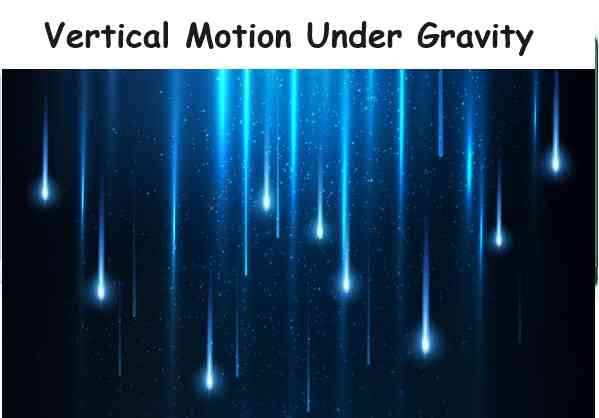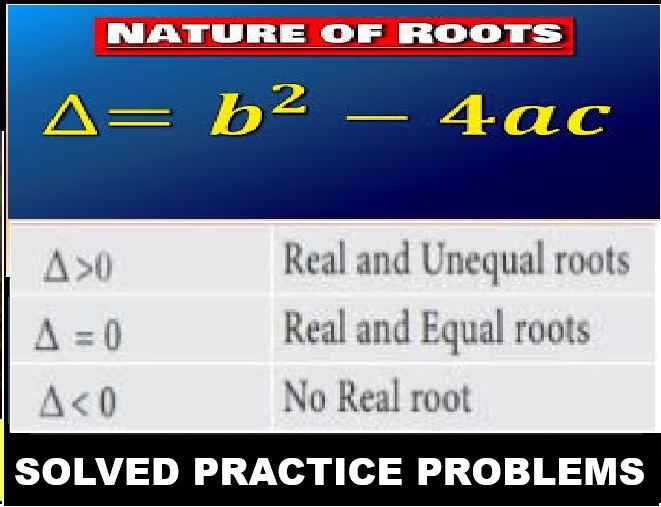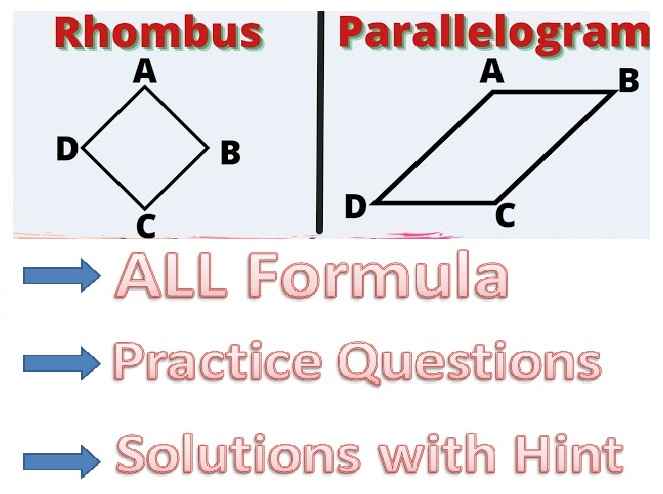Vertical Motion Under Gravity: Numericals Class 11 ISC Nootan Physics Solutions Ch-4 Motion in a Straight Line. Step by step solutions of Kumar and Mittal Physics of Nageen Prakashan as council latest prescribe guideline for upcoming exam. Visit official Website CISCE for detail information about ISC Board Class-11 Physics

Vertical Motion Under Gravity: Class 11 Numericals
(ISC Nootan Physics Solutions Ch-4 Motion in a Straight Line)
| Board | ISC |
| Class | 11 |
| Subject | Physics |
| Book | Nootan |
| Chapter-4 | Motion in a Straight Line |
| Topics | Numerical on Vertical Motion Under Gravity |
| Academic Session | 2024-2025 |
Numerical on Vertical Motion Under Gravity
(ISC Nootan Physics Solutions Ch-4 Motion in a Straight Line)
Que-14: A ball is thrown vertically upwards from the top of a tower with a velocity of 20 m/s. The ball strikes the earth after 5 s of its throwing. What is the height of the tower? What will be the velocity of ball while striking the earth? (g = 9.8 m/s^2).
Sol: “Initial velocity u = 20 m/s
Time (t) = 5 sec
Distance (s) = ?
Final velocity (v) = ?
G = 9.8 m/s^2
As per the formula,
S = -ut + 1/2 at^2
S = -20 * 5 + ½ * 9.8 * 5^2
S = -100 + 122.5
S = 22.5 m Ans.
And, V = -u + gt = -20 + 9.8 * 5
= -20 + 49 m/s = 29 m/s Ans.
Que-15: A ball which is thrown vertically upwards reaches the roof of a house 100m high. At the moment this ball is thrown vertically upwards, another is dropped from rest vertically downwards from the roof of the house. At which height will the balls pass each other?
Sol: Let the height be 100 m
s₁ = (100-y) (-j)
u = 0(-j)
u = √2×9.81×100 (j)
u = √1962 (j)
s = tū + (t^2ā)/2
(100-y) (-j) =t[0(-j)] + (t^2/2)[9.81(-j)]
y = 100 – (t^2/2)(9.81) = t(√1962)-(t^2/2)(9.81)
100 = t(√1962)
t = 100 /√1962
Y = 100-(10000 * 9.81)/(1962*2)
= 100- 100/4
= 75 m from the earth Ans.
Que-16: Two balls A and B thrown simultaneously, A vertically upwards with a speed of 20 m/s from the ground, and B vertically downwards from a height of 40m with the same speed and along the same line of motion. At what point do the balls collide?
Sol: Let us consider the speed of the ball thrown upwards as U1 and the ball thrown downwards as U2
Then, U1=20m/s and U2=20m/s
Consider X as the distance from the ground where the collision takes place then,
Distance from top of the tower up to the collision point = 40 − X
If it’s suppose that collision took place after time T then
For upward motion, X = 20T − 1/2×g×T^2 (Since the second equation of motion
S = ut + 1/2at ^2)
For downward motion, 40−X = 20T + 1/2×g×T^2
Adding both the equations, we get 40 = 40T.
Which gives T = 1second
We can substitute the value of T in any of the two equations to get the answer.
Thus by substituting the value of T in the upward motion equation we get,
X = 20(1) − 1/2×9.8×(1)/2 (Taking(g = 9.8m/s^2)
X = 20−4.9 = 15.1metre
So collision occurs at 15.1 metres from ground Ans.
Que-17: A person standing on the roof of a building 30m high drops a ball vertically downwards with an initial velocity of 500 cm/s. Acceleration due to gravity is 9.8 m/s^2.
(a) What will be the velocity of ball after 0.5 s ?
(b) Where will be the ball after 1.5 s ?
(c) What will be the velocity of the ball while striking the earth ?
Sol: Let the downward direction be positive.
U = 500cm/s = 5m/s
S = 30m
A = +9.8m/s^2
(i) Using V = U + At, we get
V1 = 5 + (9.8)*(0.5)
V1 = 9.9m/s Ans.
(ii) Using S = Ut + (1/2)At^2, we get
S1 = 5*(1.5) + (1/2)*(9.8)*(1.5)^2
S1 = 18.525m Ans.
(iii)Using V^2 = U^2 + 2AS, we get
V^2 = 5^2 + 2*(9.8)*30 V^2 = 613
V = √613
v =24.76 m/s Ans.
Que-18: A boy standing on the top of a 40m high building projects a stone vertically upwards with an initial velocity of 10 m/s. The stone eventually falls to the ground.
(a) After how long will the stone strike the ground ?
(b) After how long will the stone pass through the point from where it was projected ?
(c) With what velocity will it strike the ground ? (g = 9.8 m/s^2).
Sol: Given that : Height h = 40 m, Initial velocity u = 10 m/s
(i). The time when the stone strike the ground is
Using equation of motion
s = ut – 1/2 gt²
-40 = 10t – 1/2 x 9.8t²
4.9t² – 10t – 40 = 0
t = 4.05 sec Ans.
(ii). The time when the stone pass through the point from where it was projected is
Using equation of motion
0 = 10t – 4.9t²
4.9t² = 10t
t = 100/49
t = 2.04 sec Ans.
(iii). The velocity of the stone when it will strike the ground is
Using equation of motion
v² – u² = 2as
v² = 100 + 2×9.8×40
v = 29.73 m/s = 30 m/s Ans.
Que-19: A balloon, going upwards with a velocity of 12 m/s, is at a height of 65m from the earth at any instant. Exactly at this instant a packet drops from it. How much time will the packet take in reaching the earth ?
Sol: When the packet is released from the balloon , it moves up with the same speed as that of the balloon.
here,
h = – 65m ( -ive sign is because the packet is moving downwards)
u = 12 m/s
a = g = -10 m/s ( taking the value of g as 10 m/s is convenient for this numerical)
Using, h = ut + 1/2 a t²
-65 = 12t – 1/2 *10t²
-65 = 12t – 5t²
5t² – 12t – 65 = 0
5t² – 25t + 13t – 65 = 0
5t ( t – 5 ) + 13( t – 5) = 0
( t – 5)(5t + 13) = 0
t =5 or t = -13/5
Since time can never be negative, the packet will take 5 sec. to reach the ground. Ans.
Que-20: An astronaut jump from an aero plane. After he had fallen 40m, then his parachute opens. Now he falls with a retardation of 2.0 m/s² and reaches the earth with a velocity of 3.0 m/s. What was the height of the aero plane? For how long astronaut remained in air ?
Sol: Given an astronaut jumps from an aero plane, and fallen 40 m before opening parachute, h = 40m
Since it is a case of freely falling body, initial velocity, u = 0
Using the equation of motion, for acceleration due to gravity, g = 9.8 m/s²
v – u² = 2gh
= v² = 2×9.8×40 = v² = 784
= v = √784 = 28 m/s
So, velocity through 40m is 28 m/s.
Then time taken is, from the equation of motion
v = u +gt
= 28 = 9.8t1 = t1 = 28/9.8 ≈ 2.86 sec
After opening the parachute, given that there is a retardation, a = -2 m/s²
Reaches the earth with velocity, v2 = 3 m/s
The time taken after opening the parachute is
v2 = v + at2
= 3 = 28 + (-2)t2 = 3 – 28 = -2t2
= -25 = -2t2 = t2 = 25/2 = 12.5 sec
Using the equation of motion in this case
v²2 – v² = 2ah1
= 3² -28² = 2 x (-2) h1
= 9 – 784 = -4h1
h1 = -775/-4 = 193.75m
Height of the aeroplane is the sum of the distance travelled before opening the parachute and after opening the parachute
H = h + h1 = 40 + 193.75 = 233.75m = 234m
Total time in air is the sum of the time before opening the parachute and after opening the parachute
t = t1 + t2 = 2.86 + 12.5 = 15.36 sec = 15.4 sec
Thus, the height of the aero plane is 234m and total time remained in air is 15.4s.
Que-21: When a balloon rising vertically upwards at a velocity of 10 m/s is at a height of 45m from the ground, a parachutist bails out from the balloon. After 3 s, he opens the parachute and decelerates at a constant rate of 5 m/s^2.
(a) What is the height of a parachutist above the ground when he opens the parachute ?
(b) How far is he from the balloon at this constant ?
(c) With what velocity does he strikes the ground ?
(d) What time does he take in striking the ground after his exits from the balloon ?
Sol: When the parachutists bails out, he has same velocity of the balloon.
(a) u=10m/s in upward direction.
g=-10ms2 in downward direction
t=3sec
so by second equation of motion:
s=ut+1/at²
=10×3+1/2(-10)x 3×3
=30-45s
=-15m
Here negative sign indicates that it is directed downwards.
So height from the ground when he opened parachute is =45-15=30m
b) time=3sec
balloon rises through 30m
Balloon velocity=10m/s
Hence parachute is 30+15=45m away from balloon.
c) The velocity of parachute=?
time=3sec
V=u+gt
=10-10×3
=-20m/s directed downwards.
at time t=3sec
u=-20m/s
displacement s=-30m
a=+5m/s2 upwards
time taken=t=?
s=ut+1/at²
-30=-20t+5/2 t²
t²-8t+12=0
t²-6t-2t+12=0
t(t-6)-2(t-6)=0
t=6 or 2 sec
if t=6 sec then velocity with which he hits the ground will be V=u+at
V=-20+5×6 =10m/s
which is in upward direction not possible.
Hence t=2sec
V=-20+5×2=-10m/s Which will be in downward direction.
d) The total time parachutist takes to hit ground=3s+2s=5sec
Que-22: The displacement x of a particle depends on time t according to the relation x = 3-5t+2t^2 (where t is in seconds and x in metres). Find its
(i) velocity at t = 2s and (ii) acceleration at t = 4s.
Sol: (i)The velocity of the particle is defined as the change in the position of an object with respect to time.
It is given as:
v = dx/dt
Substituting the displacement equation x in the above equation, we get:
v = d(3-5t+2t²)/dt
Differentiating the displacement equation with respect to time, we get:
v = -5 + 2 x 2t
v = -5 + 4t ……………..(1)
Now, the velocity at time t = 2 s can be calculated by substituting the value of time in equation (1).
Substituting t = 2 s in equation (1) I , we get:
v = -5 + 4 x 2
v = 3 m/s Ans.
ii) To calculate the acceleration, we differentiate the velocity equation (1) with respect to time, we get:
a = dv/dt
Substituting the equation (1) in the above equation, we get:
a = d(-5 + 4t)/dt
Differentiating the velocity equation with respect to time, we get:
a = 4 m/s² Ans.
Que-23: The displacement x (in metre) of a body varies with time t (in second) as x = -2/3t^2+16t+2. How long does the body take to come to rest ?
Sol: x=-2/3t²+16t+2
differentiating w.r.t.t,
V = -4/3t+16
for the body to come to rest, Velocity
should be 0.
4t/3 = 16 ⇒t = 12sec Ans.
Que-24: A particle moves along a straight line such that its displacement x at any time t is given by x = t^3-6t^2+3t+4 metre. Find its velocity, when the acceleration is zero.
Sol: V = ds/dt = 3t²-12t+3
a = dv/dt = 6t-12
When a = 0
6t-12 = 0
t = 2s
v = 3(2)² -12(2) +3
= -9 m/s Ans.
Que-25: The acceleration ‘a’ in ms^-2 of a particle is given by a = 3t^2+2t+2, where t is in time. If the particles starts out with a velocity v = 2 m/s at t = 0, then find the velocity at the end of 2 seconds.
Sol: As we know that
Acceleration, a=dv/dt
⇒dv=a dt
Let the velocity of the particle at end of 2 sec is v,
∴∫v-2 dv=∫2-0 (3t^2+2t+2)dt
⇒[v]v-2 =[t^3+t^2+2t] 2-0
⇒(v−2)=(16−0)
⇒v=18 m/s Ans.
— : end of Vertical Motion Under Gravity: Numericals Class 11 ISC Physics Solutions :–
Return to : – Nootan Solutions for ISC Class-11 Physics
Thanks
Please Share with your friends if helpful


